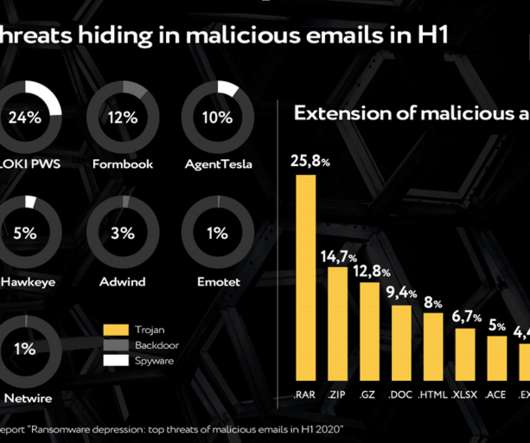Ransomware en masse on the wane: top threats inside web-phishing in H1 2020
Security Affairs
SEPTEMBER 18, 2020
Web-phishing targeting various online services almost doubled during the COVID-19 pandemic , it accounted for 46 percent of the total number of fake web pages. Downloaders , intended for the installation of additional malware,and backdoors , granting cybercriminals remote access to victims’ computers, also made it to top-3.











Let's personalize your content